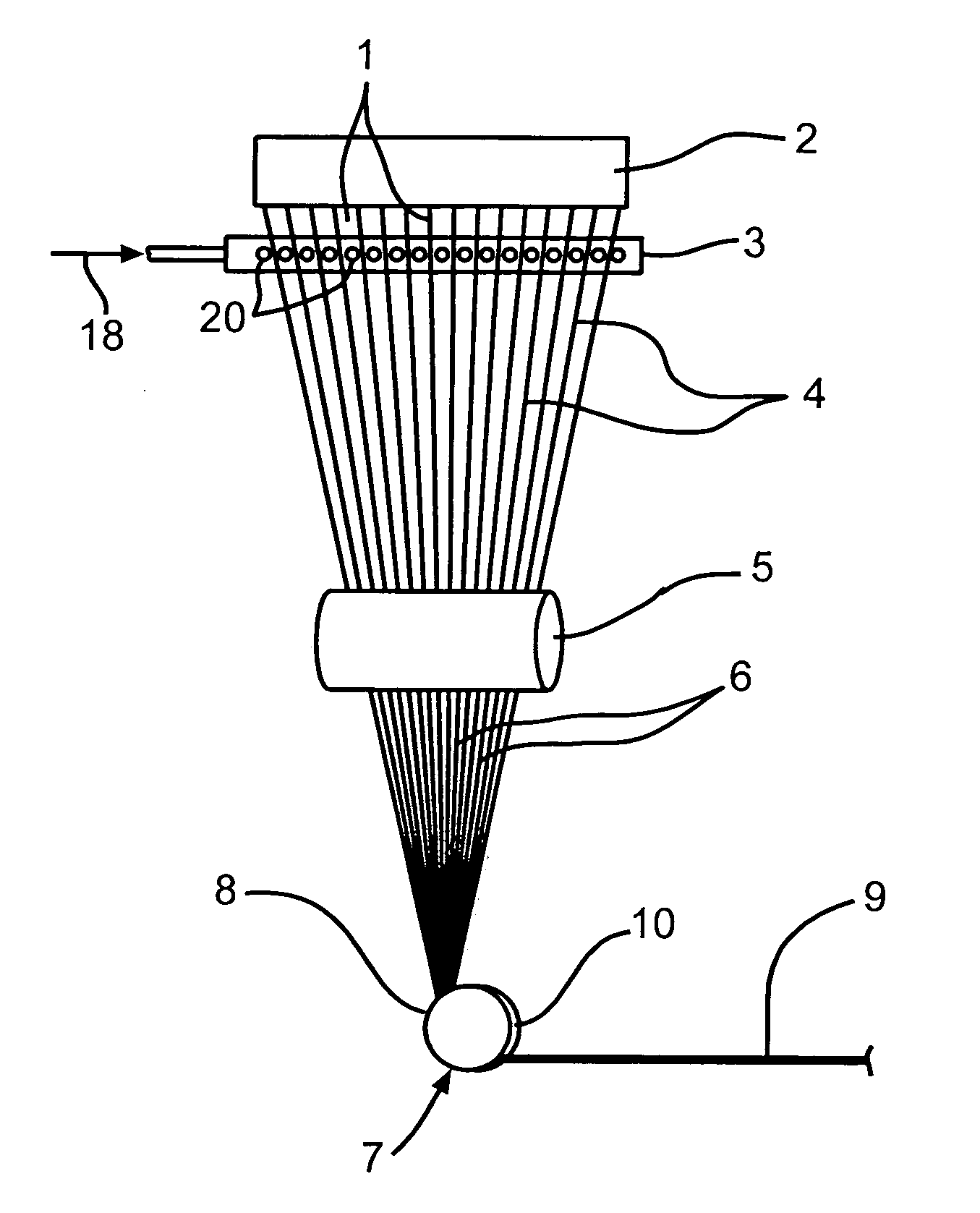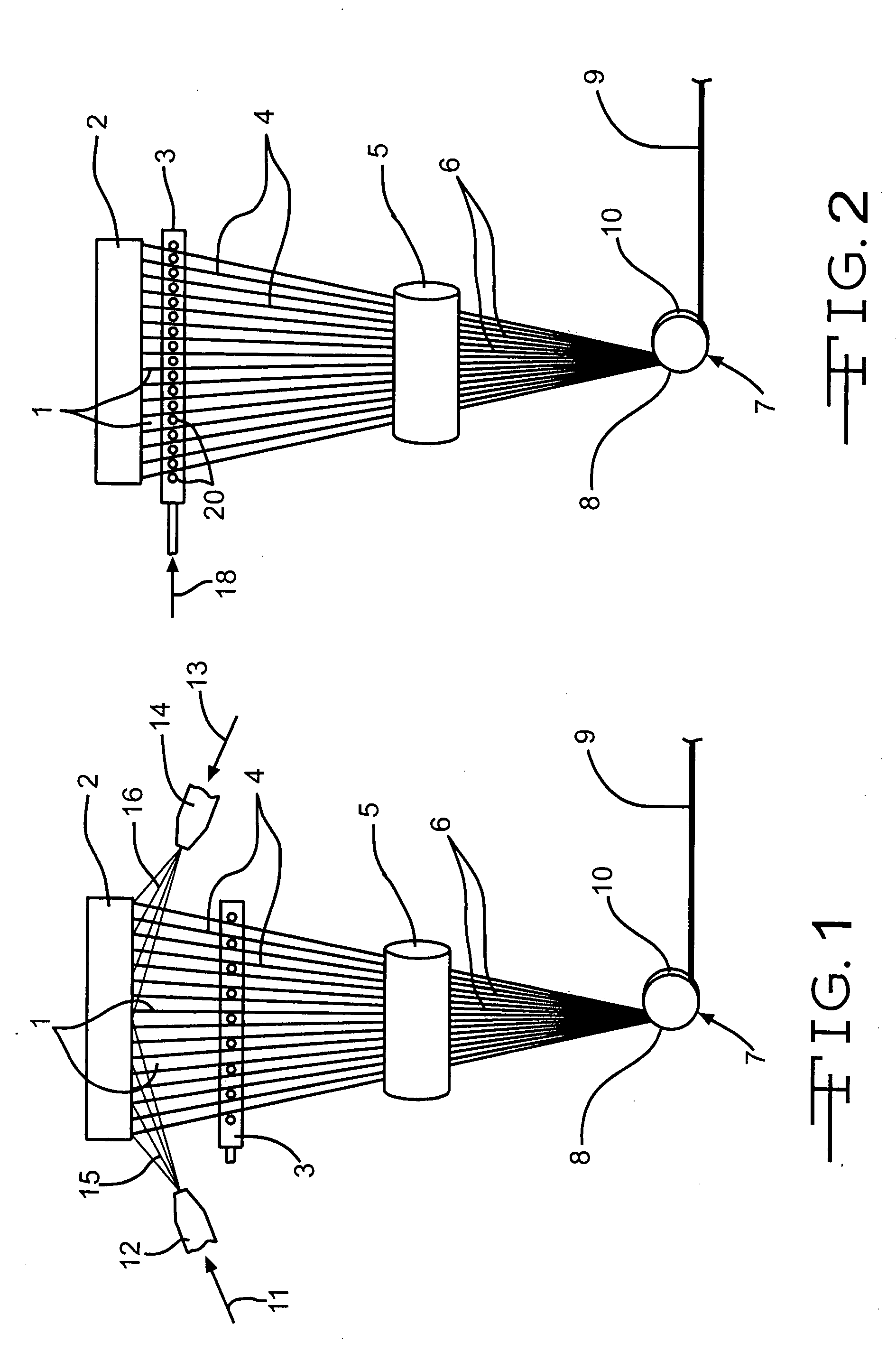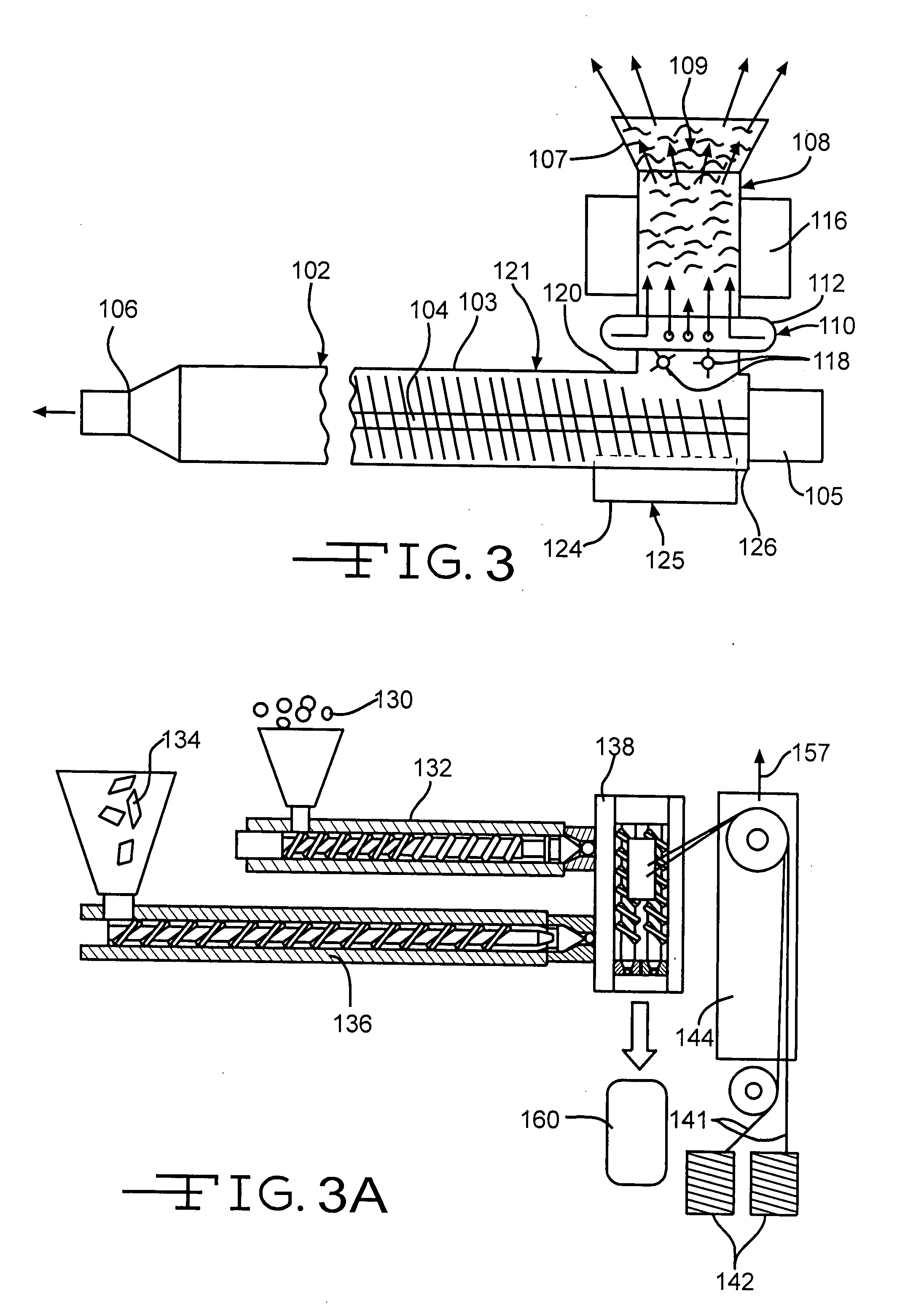Method and system for forming reinforcing fibers and reinforcing fibers having particulate protuberances directly attached to the surfaces
a technology of reinforcing fibers and fibers, which is applied in the direction of transportation and packaging, manufacturing tools, natural mineral layered products, etc., can solve the problems of composite product strain or failure, increase costs, and difficult manufacturing and processing, and achieve the effect of rapid bonding
- Summary
- Abstract
- Description
- Claims
- Application Information
AI Technical Summary
Benefits of technology
Problems solved by technology
Method used
Image
Examples
Embodiment Construction
[0027]Typically, chopped fiber made and used in the invention will be at least approximately 3 mm long on average, but shorter fibers can be used. Longer chopped fibers can be as long as approximately 250 mm on average, with a more typical range being between approximately 7 mm and approximately 100 mm on average, most typical being in the range of approximately 12 mm to approximately 50 mm on average. The majority of the fibers in the chopped strands typically have diameters of from approximately 6 micrometers to approximately 50 micrometers on average, preferably from approximately 10 to approximately 23 micrometers on average, but other diameters may be suitable for some applications. Microfibers, with diameters less than approximately 6 micrometers also may be converted into the fibers of the present invention. Customarily, most of the fibers will be in a narrow range of fiber diameters and lengths, because this is how most reinforcing fiber products on the market are made, but ...
PUM
| Property | Measurement | Unit |
|---|---|---|
| Length | aaaaa | aaaaa |
| Diameter | aaaaa | aaaaa |
| Diameter | aaaaa | aaaaa |
Abstract
Description
Claims
Application Information
 Login to View More
Login to View More - R&D
- Intellectual Property
- Life Sciences
- Materials
- Tech Scout
- Unparalleled Data Quality
- Higher Quality Content
- 60% Fewer Hallucinations
Browse by: Latest US Patents, China's latest patents, Technical Efficacy Thesaurus, Application Domain, Technology Topic, Popular Technical Reports.
© 2025 PatSnap. All rights reserved.Legal|Privacy policy|Modern Slavery Act Transparency Statement|Sitemap|About US| Contact US: help@patsnap.com



